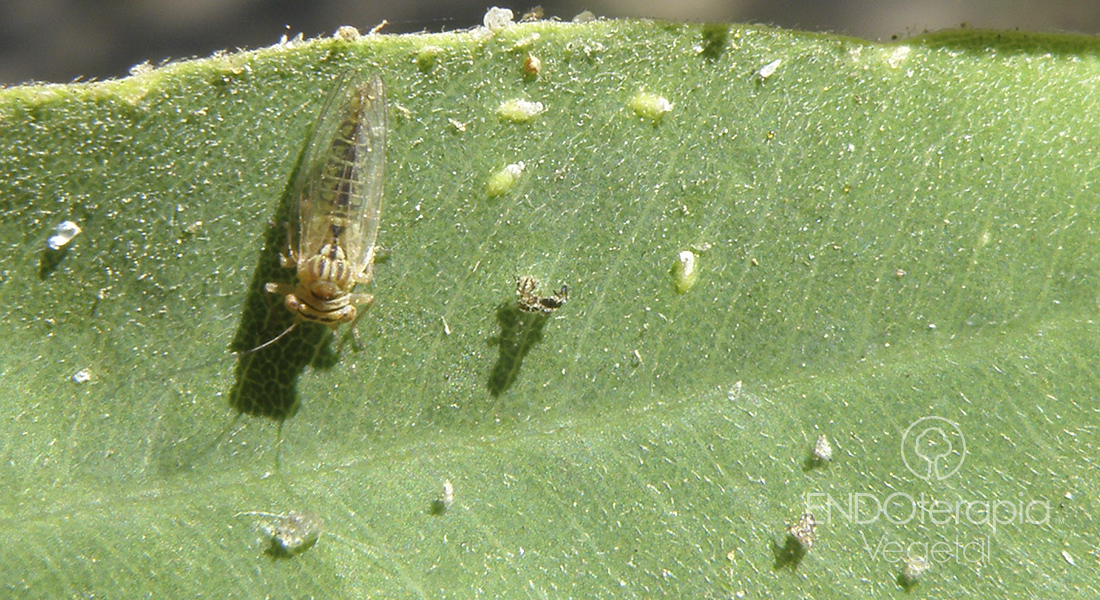Project Description
Adults are 3 to 4 mm long, the female being larger than the male. They are greenish to yellowish brown in colour and have a black transverse band on the head (Fig. a).
The nymphs are bright, with variable coloration, between green and yellow, sometimes with reddish spots, but always with very characteristic transverse black stripes (Fig. b). Like the vast majority of psylla, they have very characteristic eyes.
Damage to the tree is caused by both nymphs and adults, which suck the sap from the leaves, leaving small wounds that become necrotic. If the pest infestation is very severe, they produce a significant deterioration of the leaves and can even lead to defoliation. Like other species of psylla, they excrete a sticky substance (honeydew) that can be a nuisance in the urban environment, also leading to the development of fungi (sooty mould) and the appearance of ants.
Preventive treatment with plant endotherapy (ENDOterapia Vegetal®) to avoid the occurrence of problems. Preventive treatment is generally recommended in late spring, when the first infestations are detected.









